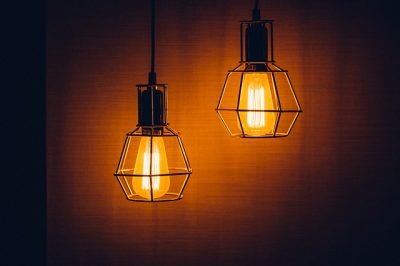 A picture speaks 1,000 words and yet, it will remain silent if it is not presented in the best light. This is why adopting the most appropriate lighting strategy is essential if you hope to catch the eye of the beholder. Let us look at three concerns to keep in mind as well as the impacts that they will have within a room.
A picture speaks 1,000 words and yet, it will remain silent if it is not presented in the best light. This is why adopting the most appropriate lighting strategy is essential if you hope to catch the eye of the beholder. Let us look at three concerns to keep in mind as well as the impacts that they will have within a room.
Balancing Shape and Color
Any work of art is defined by its sense of balance and color. This is why you will need to consider these concepts when choosing the correct lighting. One excellent piece of advice provided by the Artist’s Network is to use what is known as a Color-Rendering Index (CRI). This is a scale from 0 to 100; higher numbers representing those which are better able to accentuate the natural tones found within a painting. So, it could be wiser to opt for LED bulbs as opposed to traditional incandescent fixtures.
In the same respect, make certain that the shape of the lamp itself reflects the innate nature of the painting. They will otherwise appear to clash; detracting from the beauty of the art. Bespoke designs such as the Petite Friture Vertigo offered by Lamp Twist will provide you with an eye-catching and desirable ambience.
Adopting Contemporary Styles and Designs
It is normally best to accent your existing works of art through the use of contemporary lighting styles. The reason that this is the case revolves around their minimalist sense of appeal. In other words, they will not overwhelm the art itself. They are also excellent choices if you happen to be dealing with a smaller environment. The professionals at Architectural Digest recommend track lighting or ceiling-mounted recessed fixtures, as they can maximise the amount of illumination available while still remaining relatively out of sight.
Embrace a Sense of Standalone Beauty
Most art is associated with a bold sense of standalone beauty. So, it only makes sense that this very same notion should be embraced when choosing a lighting fixture. A word of caution still needs to be mentioned here. There is a massive difference between standalone beauty and an off-putting fixture. Try to encounter a solution that reflects the style of the painting and perhaps more importantly, of the frame. For example, a fixture representing the Art Deco era will work extremely well with a painting or sculpture from the same period. This observation holds just as true in regards to contemporary works of art. Coordination is key if you are looking to accent the environment with a single fixture, so be sure to choose wisely.
Putting it All Together
While beauty is in the eye of the beholder, please keep these suggestions in mind when deciding upon the correct lighting strategy for your art. Also, feel free to read through the countless other home-inspired tips found at Your Parenting Info. There is no better way to accentuate your artwork than through the use of bespoke and eye-catching lights.
Brought to you by our friends at lamptwist.com.










